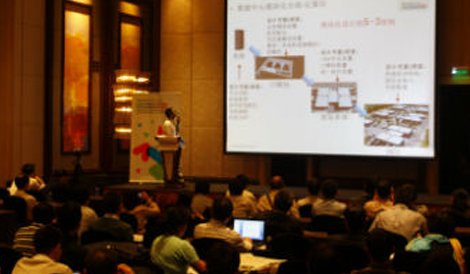Chinese internet data center company Tencent’s data center planning director Zhu Hua has encouraged companies looking to build big in China to consider the west of the country, where provinces boast abundant power supply.
“Locate your mega data centers in Western China,” Hua said at the 2013 DatacenterDynamics Converged Shanghai Conference.
Hua said data center site selection is a resource issue and factors such as electricity, climate, network and human resources all need to be considered.
“Provinces (in Western China) like Xinjiang, Gansu, Qinghai and Shanxi are abundant in electricity resources,” Hua said.
“For Inner Mongolia, it is worth noting that there are differences between the western part and eastern part of the autonomous region. For places in the Eastern part like Hulun Buir and Chi Feng, as they have been integrated into the State Grid and Northeast China Grid, they have no differences with other provinces in electricity price and policies; however, for the western part like Hohhot and Erdos, their electricity pricing and policies are determined by the autonomous region itself, which means the electricity can be cheaper.”
China’s provinces - map courtesy of the Creative Commons
Weather conditions are also an important factor to consider for those who plan to build mega data centers, because these determine to what extent natural cooling technology can be utilized, and this enhances China’s west as a data center location.
“Cities like Xining, Hohhot and Harbin have low annual average temperature and are suitable for adopting natural cooling technology,” Hua said.
“Though the sandy and dusty atmosphere in Northwest China may affect the efficiency of natural cooling technology, it can be resolved by using other mature technologies, hence it should not be a hindrance anymore.”
While selecting a site for mega data centers, companies also need to take geological activity of the site into serious consideration.
“Shenzhen, Shanghai, Baotou and Chongqing are out of seismic belts, hence are relatively safe for building data centers. However, Tianjin is within a seismic belt and Hohhot is close to a seismic belt, which means anti-seismic specification needs to be planned in a proper way for data centers in such places. Inner Magnolia and Chongqing are free from [the risk of] tsunami.”
To ensure the smooth operation and maintenance of data centers, human resource must also be considered, Hua said.
However, he pointed out that in China, provinces which have an abundance of energy tend to be weak in turning out and attracting talent, whereas provinces which have a rich reserve of human resources are always in short supply of energy.
“Energy tends to be concentrated in Western China such as Inner Magnolia and Gansu, while most of China’s universities—the cradle for cultivating talents, are located in eastern and middle part of China, mainly in Beijing, Shanghai, Jiangsu and Guangdong where energy reserve is scare.”
According to Hua, the contradiction between energy and human resource distribution in China can be resolved by automating IT and facility operations.
“For instance, for a mega data center with 100,000 servers located in Western China can be managed by 12 operation and maintenance staff, by taking advantage of operation automation systems,” Hua said.
Hua also said he believes that the network should not be an obstacle for building mega data centers in Western China.
“I once visited many provinces in Western China including Qinghai and Gansu, though network systems in those places are not good, this should not be a hindrance for building mega data centers as telecommunication players have buried large number of optical fibers under the ground,” Hua said.
He said one example is China Telecom’s Hohhot Cloud Computing Base in Inner Mongolia, which achieves high-speed optical fiber deployment within a short time.
For companies planning to build mega data centers in Western China, Hua suggested they make field trips to and serious evaluations for the site and ensure that various support policies regarding land pricing, taxation, electricity supply and price, talent introduction, among others are implemented as promised by local government bodies or other authorities.
Hua has more than 10 years’ experience in data center planning and construction. He once participated in (or as an organizer) the planning of many big data centers for famous internet companies including the first data center for Alibaba, the data center of SNDA, Tencent’s Shanghai & Shenshan Data center Park and Tencent’s Tianjin Data center (phase 2).
He is an expert of micro-modular data centers and the pioneer in applying high voltage direct current technology (HVDC) to internet data centers.
DatacenterDynamics Converged Shanghai took place at the Kerry Hotel on September 3.

